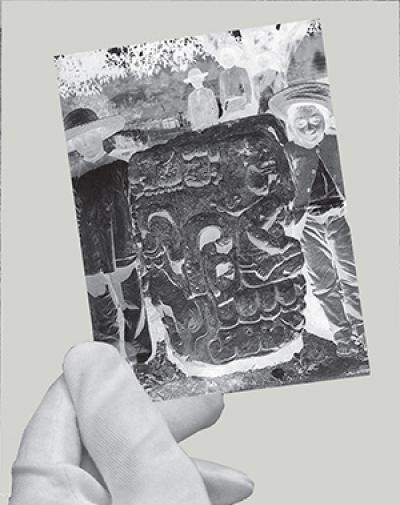


In over a century since the Municipality of Copan was founded, the town has grown from a rural hamlet to a bustling tourist destination and many of the ancient ruins have been investigated and restored. Today, however, inhabitants and visitors have no visual memory of the town or archaeological site in these early days. Fortunately, photographs of the village and ruins taken in the 1890s on glass plate negatives by the Peabody Museum Expedition to Honduras are preserved at Harvard University in Cambridge, Massachusetts. Their recent digitalization enabled this photographic exhibit, which the Peabody Museum has donated to the Town of Copan Ruinas and a copy to the Instituto Hondureño de Antropología e Historia. The exhibit highlights over one hundred years of collaboration of archaeology and community in Copan. Its installation in the Municipal Building makes it accessible to villagers, school children, and visitors alike, and encourages local involvement to preserve the history and spirit of the past.
This exhibition was originally mounted at the Peabody Museum in 2008, curated by Barbara Fash, director of the Corpus of Maya Hieroglyphic Inscriptions Program. It was later gifted to the town of Copan Ruinas, and installed with Spanish translations in the Copan Municipal Hall in 2009.
One of the largest and most valuable collections in the Peabody archives contains more than 10,000 nineteenth-century glass plate negatives. The earliest images in this unique collection were taken at Copan, Honduras, and are part of this exhibition, “Fragile Memories.”
The Copan glass plate negatives are “dry plate,” a process introduced in the 1870s of coating glass plates with a light-sensitive gelatin. As long as the fragile plate itself was not broken, the medium was hardy—relatively resistant to temperature and humidity fluctuations. Indeed, for more than 115 years the Copan negatives have endured, surviving the tropical climate of Central America, where they were shot, as well as transportation to and storage in the United States.
The digitization of the Peabody Museum’s glass plate negatives, which took two years, has opened a new chapter in the investigation of Copan by revealing new archaeological details and information.
This exhibition highlights the importance of preserving a rich photographic archive, and shows how yesterday’s technology can be highly valuable in today’s rapidly changing and creative technological landscape.
Download the exhibition brochure (PDF)

Copan Ruinas native, Karina Garcia, reflects on photographs of the excavations at Copan, Honduras where she began developing her archaeological career as a participant in the dig. Karina shares the significant history of her town, its people, and the values of her community.
The talk is given in Spanish, subtitled in both Spanish and English.